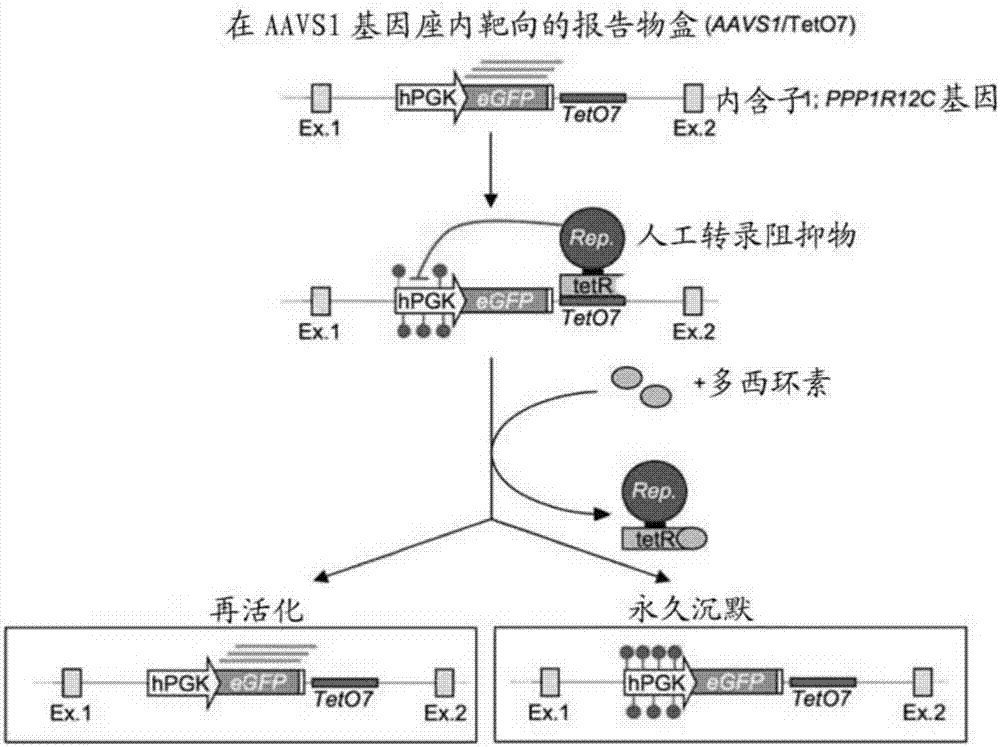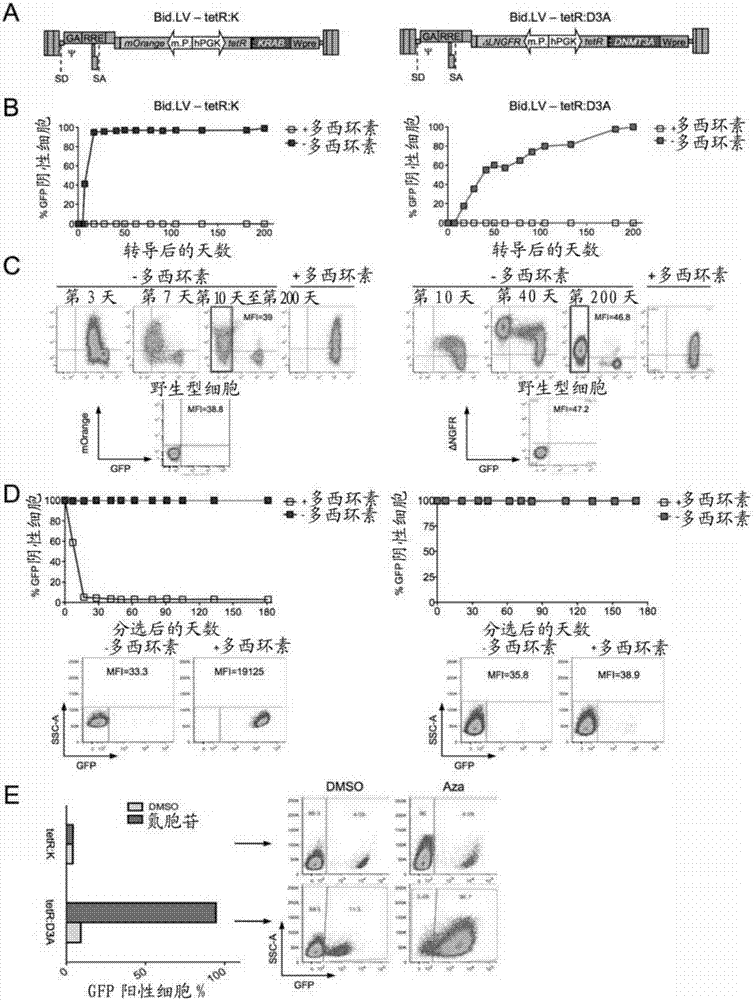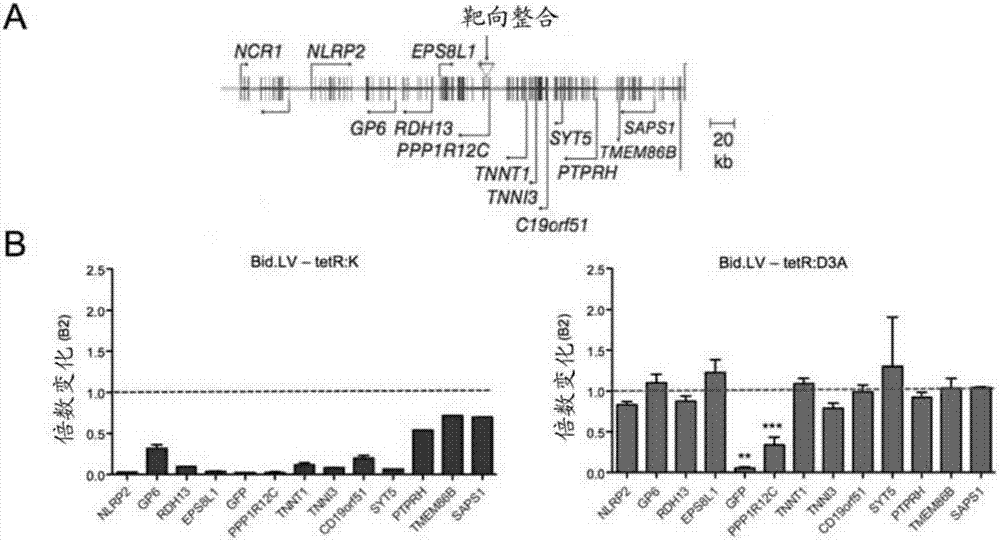Permanent epigenetic gene silencing
A technology for silencing, target genes, in the field of gene silencing and/or epigenetic editing
- Summary
- Abstract
- Description
- Claims
- Application Information
AI Technical Summary
Problems solved by technology
Method used
Image
Examples
Embodiment 1
[0547] To recapitulate the endogenous epigenetic mechanism that permanently silences endogenous retroviruses (ERVs) during development, we employed the human zinc finger protein 10 (ZNF10; Szulc, J. et al. (2006) Nat. Methods3: 109-16) and the catalytic domain of human DNA methyltransferase 3A (DNMT3A; Law, J.A. et al. (2010) Nat. Rev. Genet. 11:204-20). The amino acid sequences of these domains are shown in Table 1.
[0548] To test the activity and stability of gene silencing induced by these two effector domains, we used a tetracycline (tet) responsive system. We fused the two effector domains to the Escherichia coli tetracycline-controlled repressor (tetR) DNA-binding domain (Gossen, M. et al. (1992) Proc. Natl. Acad. Sci. USA89:5547-51), generating tetR:KRAB and tetR:DNMT3A artificial transcriptional repressors (ATR, hereinafter referred to as tetR:K and tetR:D3A, respectively). An advantage of the tetR system is that it allows temporal control of the binding of tetR to...
PUM
 Login to View More
Login to View More Abstract
Description
Claims
Application Information
 Login to View More
Login to View More - R&D
- Intellectual Property
- Life Sciences
- Materials
- Tech Scout
- Unparalleled Data Quality
- Higher Quality Content
- 60% Fewer Hallucinations
Browse by: Latest US Patents, China's latest patents, Technical Efficacy Thesaurus, Application Domain, Technology Topic, Popular Technical Reports.
© 2025 PatSnap. All rights reserved.Legal|Privacy policy|Modern Slavery Act Transparency Statement|Sitemap|About US| Contact US: help@patsnap.com



